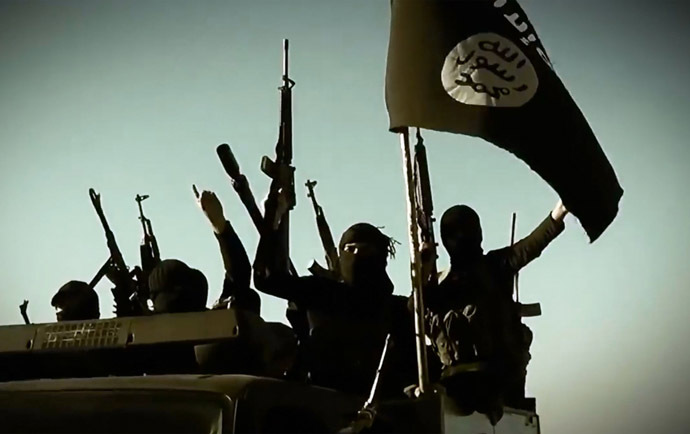Pentagon spending hits five-year high amid anti-ISIS campaign

The rate at which the United States economy grew last quarter has surpassed the expectations of experts, and a surge in military spending is said to be the culprit.
On Thursday, the US Commerce Department announced that the country’s gross domestic product, or GDP, grew at a 3.5 percent annual rate for the third quarter of 2014, well beyond Bloomberg’s forecasted pace of only 3.0 percent.
The reason for the better-than-expected results, early reports indicate, is a spike in defense spending during Q3. The Pentagon saw its spending during the last quarter go up by 16 percent, signaling a five-year high not seen since the US was involved in wars in both Afghanistan and Iraq. So significant was defense spending during the last quarter, in fact, that the 16 percent growth seen in that sector is said to have helped the economy overcome below-expectation consumer spending rates recorded during that same span.
“This is the strongest six-month interval we’ve had in 10 years,” Carl Tannenbaum, chief economist at the Northern Trust Company, told the New York Times on Thursday,.
“Consumers were a little less active than we might have thought,”Tannenbaum said, adding, “the things that drove us were not the usual suspects,” referring to the defense sector bump.
“The bottom line: third quarter growth was stronger than expected, but the composition of the growth wasn't what we were be hoping for,” CNBC “On-Air Stocks” editor Bob Pisani wrote this week.
Indeed, the surge in military spending comes despite the imminent withdrawal of the US military from Afghanistan after 13 years of war, the longest such operation in the Pentagon’s history. Nonetheless, the starting of a new campaign in recent months in the Middle East where the movements of the so-called Islamic State group have been met with American airstrikes have likely lumped more money into defense spending then Washington had expected. Reuters reported on Thursday this week that defense spending was directly responsible for adding 0.66 percentage points to the GDP growth, citing specifically an increase in spending on ammunition and jet fuel, with Jeffry Bartash at MarketWatch agreeing that the surge came not due to weapons purchases, but ammo, missiles and oil, as well as spending on personnel and installation support.

“The more conspiratorial minded might be led to believe the Obama administration goosed military spending to try to boost the economy just ahead of the November elections. Without the sharp rise in spending, the U.S. would have grown a lot slower than the preliminary 3.5 percent growth rate,” Bartash wrote. “Circumstantial evidence suggests administrations from both parties have adopted that tactic in the past,” he added, noting that similar spikes occurred just ahead of elections in 1986, 1994, 2004, 2008 and 2012.
Without a doubt, though, the anti-Islamic State campaign opened up in recent months is indeed costing the Pentagon a pretty penny, with a report from earlier this month putting the cost of the operation then at nearly $1 billion. US Defense Secretary Chuck Hagel has also admitted in recent weeks that the mission against the extremist group is costing Washington roughly $10 million each day as strikes continue to occur in parts of Iraq and Syria taken by the militants.
The last time the US experienced a military spending surge as sharp as the one seen during the last quarter was during Q2 of 2009 when defense purchases shot up by 17.4 percent, the Associated Press acknowledged this week.
Meanwhile, the Columbus Dispatch reported recently that Michele Flournoy, the former undersecretary of defense in the Obama administration, said at a gathering of defense analysts last week that the national security of the US is at risk because of new defense spending cuts expected to soon occur as a consequence of the reductions outlined in the sequester agreement from last year. The Pentagon is expected to lose $500 billion in funding during the next decade under the terms reached lat year, which Flournoy warned will have a detrimental effect on the US.
“You can’t expect to defend the nation under sequestration,” said Flournoy. “The risks are real, they are accumulating, and they are substantial. The risks associated with sequestration are not front-loaded, they are accumulative.”
Regardless, the US military is expected to remain the most well-funded in the world, with annual military spending expected to exceed $600 billion a year through 2021.













